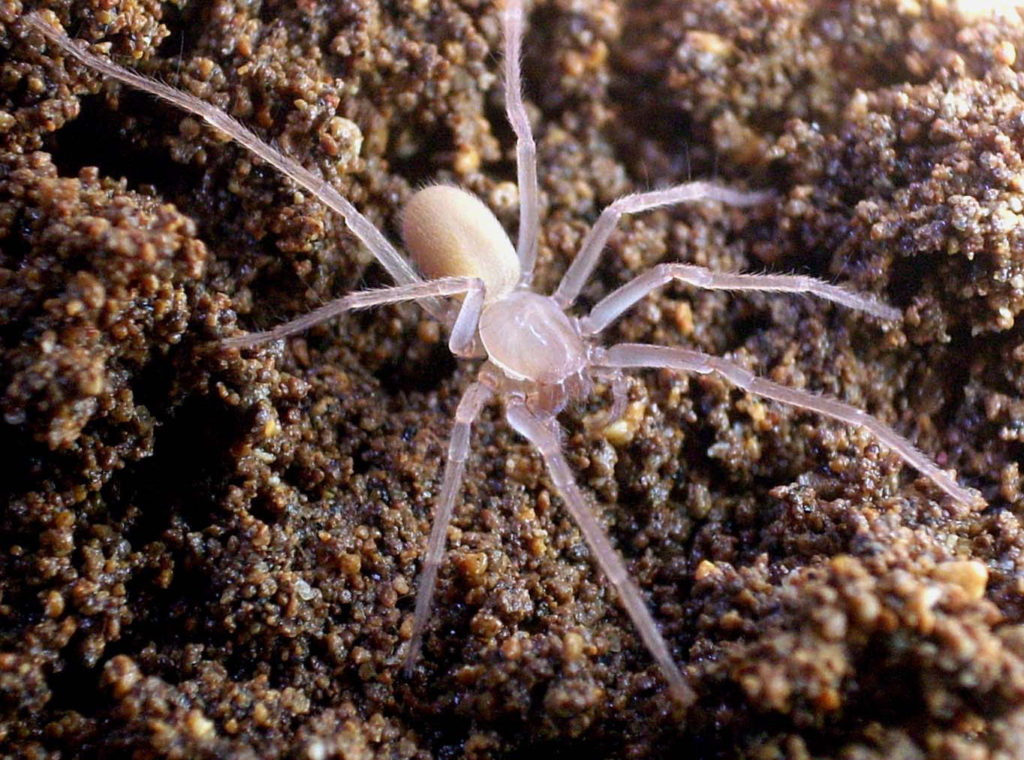The remote caves of Central Java have yielded information about a new variant of Wandering Spider (Araneae, Ctenidae,) tentatively categorized as Amauropelma matakecil. Researchers have documented mature female cave spiders and their young, but have yet to locate any males capable of reproduction. This may relate to the female spiders’ complete lack of a tan.
The closest biological relatives of this lonely, translucent cave spider live in Queensland, Australia, and occupy a significantly different ecosystem. These more ubiquitous varieties of wandering spider have darker coloration, larger eyes, and healthier social connectivity to friends and family.
The cave spider leads a notably alternative lifestyle from its Amauropelma counterparts, exclusively inhabiting the dark recesses of limestone caves (classifying the spider as a troglobite.)
The cave spider’s small eyes, cheliceral teeth, and epigynum further differentiate it from its relatives, and have made it an easy target for bullies throughout history.
It is relevant to question how the distribution of Amauropelma came to exist in its current form, and to acknowledge the data that island ecosystems offer our understanding of the natural world. The connection of biological heritage over space and time is powerful data for science, as well as broader cultural understanding of our own species.
Furthermore, the cave spider is good evidence that spending the entirety of your life in a cave encourages poor personal appearance and loneliness.
Are you the author of this article? We had a site crash back in 2016 and lost some author attributions. We promise this is not a snub! Please email us and let us know that this is your post. Thanks and apologies!


